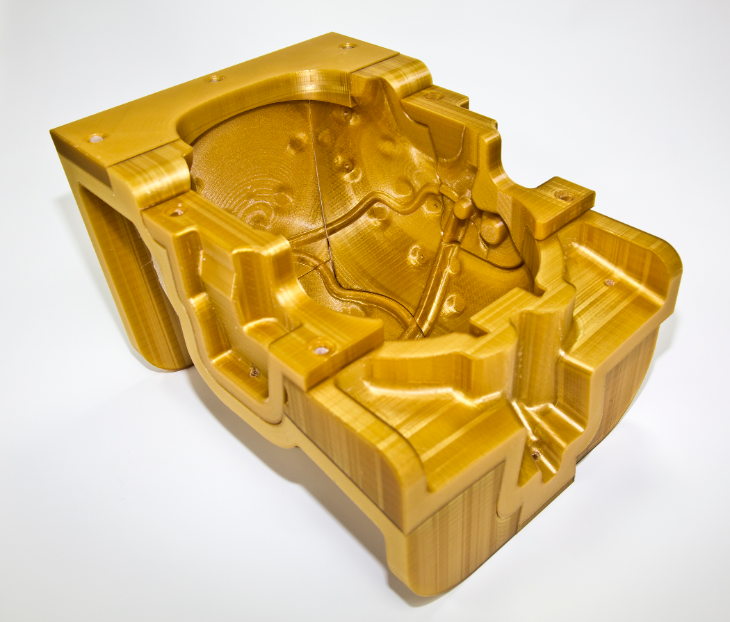“In Land Systems, we need to create prototypes of extremely complex parts, without having to resort to a complex machine,” explains Stuart Dean, Design Manager at Marshall Land Systems. “By having a F370 in-house, we have an easy- to-use system that provides dependable results throughout the prototyping process. Previously, we had to outsource our prototyping requirements, which caused a bottleneck in productivity.”
Any halt in production presents difficult and often costly challenges. However, through the use of in-house additive manufacturing Marshall Aerospace has been able to minimize tool replacement, improve responsiveness to engineers’ manufacturing needs and create more innovative tooling solutions.
In another part of the business, it has been used for limited-production runs. Traditionally, tools would be manufactured in aluminum, which was often expensive and time consuming and left little room for design flexibility. Now, the team is seeing efficiencies in tool production using 3D printing.
When tasked with creating a prototype ducting adapter — which is essential for providing fresh air to cool the aircraft’s avionics while it is on the ground — the team turned to 3D printing.
“Before committing to expensive aluminum machining, we used the Fortus 450mc to 3D print a prototype in ASA material. It enabled us to create an accurate working prototype of the complex component that we were then able to demonstrate,” says Botting. “The 3D printed duct led to a significant cost reduction compared to machining the part out of aluminum, as well as a 63 percent reduction in overall weight.”
It was not just functionality that impressed the team. Overall, producing this part in Nylon 12 was only a fraction of the total material and machining cost compared to using aluminum.
However, it was not just for ground equipment that the team used 3D printing. Today, the Aerospace team has several pieces of 3D printed ducting flying on various aircraft thanks to the ability to create accurate, repeatable and reliable parts through 3D printing.
“When manufacturing for one of our most sophisticated engineering projects, we need a method that can create a complex, functional and lightweight duct efficiently — this is where 3D printing fits perfectly. But we also need to ensure that the ducting produced will be approved by the EASA for flight,” explains Botting. “As a result, we’re using ULTEM™ 9085 resin thermoplastic — a tough, yet lightweight 3D printing material with high thermal and chemical resistance. This has been crucial to overcoming the challenge of certification, as we can now 3D print parts with the desired flame, smoke and toxicity requirements for use on aircraft.”
Each arm of the business has now set its sights on increasing the use of additive manufacturing for final parts across all the projects they undertake.
“FDM Technology™ has altered the way we work, and the aerospace-grade 3D printers and materials enable us to meet all our manufacturing requirements. Today, we have successfully identified areas of the aircraft in which we can optimize the use of certified 3D printed parts to great benefit. In the future, there is no doubt that 3D printing will continue to have a significant impact in the way we design and manufacture our aircraft,” says Botting.



